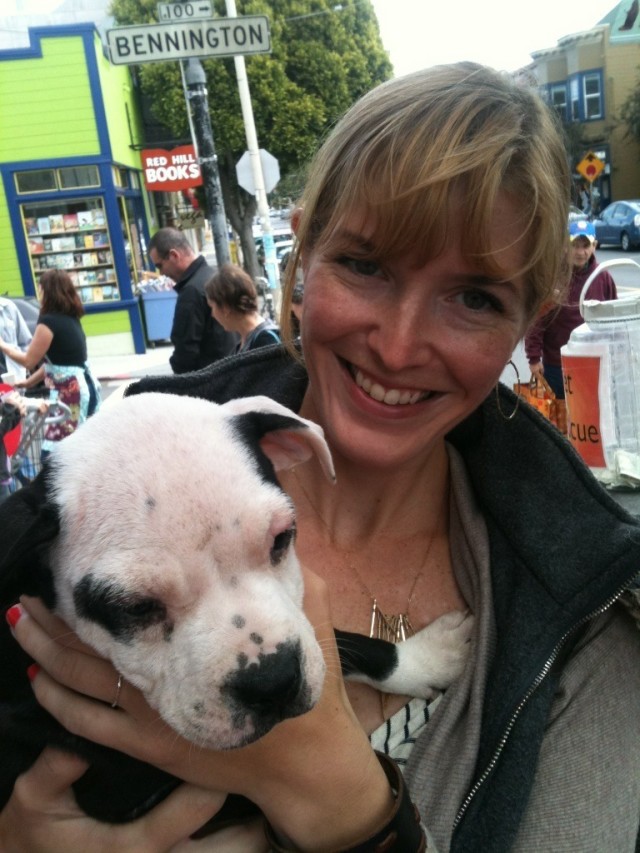Farewell, Portland

Image: Ann Haggerty
As Portland Monthly’s travel editor for the past several years, I’ve had pleasure and the honor of exploring the Northwest’s far-flung reaches to tease out can’t-miss sights, meals, and stays for Portland’s travel-hungry citizens. I’d parachute in for a couple of days, and shed a few inches of shoe leather on town streets and park trails learning the locals’ secrets. But at no point in my seven years, 10,000 miles, and untold (and mercifully unheard) windows-down, lung-emptying renditions of radio songs, did I ever stop to consider what it meant to be a local.
The question asked, and answered, itself last week while I was out reporting my final feature for Portland Monthly. (At the end of the month, I’ll begin a new job with Denver’s 5280 magazine.)
As I plugged the day’s destinations into my iPhone, I couldn’t help but smile in recognition. It seemed fitting that in my final days as an editor for Portland Monthly, I return to my hometown, Aloha, and the sprawling green-and-gold patchwork beyond the urban growth boundary where I'd spent my early years.
My career with Portland Monthly began with a bang. Literally. As in the bang and clang and shudder of a rod shooting through my Hyundai’s engine block 20 miles outside of Cheyenne, Wyoming, mere hours after I’d left Colorado, towing a U-Haul en route to Oregon.
So when I announced my resignation, I hoped for a far quieter exit. And quiet it has been. So quiet that last week, as I explored, I could hear the whisper of my childhood in the landmarks I passed.
I saw the Stockpot Broiler, site of countless celebratory dinners with steaks so tender you could practically cut them with a fork.
I saw the Old Market Pub & Brewery, where my first post-college job as a bartender and server introduced me to Portland’s burgeoning microbrew scene.
I crisscrossed Scholls Ferry Road and the backcountry lanes I regularly got lost on as a teenager.
I passed the turnoff for the creek near Gaston ("we're out here for a reason!") where I baited my own hooks—and, as a result, never caught anything.
I saw the Cruise In Country Diner, formerly the Twin Oaks Tavern, where I handed out water to 10K runners at the Turkey Trot in the 1980s.
I passed the turn to Aloha High School, home of the Warriors and many formative (and embarrassing) moments.
I saw the photo studio where I had my senior pictures taken, the movie theater where my sister and I snuck into double features, and the dairy my mom and I walked to each week to collect fresh milk in glass jars.
I saw Harvey, the giant rabbit outside Harvey Marine, a little worse for the wear after five decades (I sympathize), and the bar, now an underground sports pub, where I first used my fake ID.
I passed Honeybaked Ham, where I spent hours waiting for mom’s holiday meat, and the Olive Garden, where I learned how to jump a car after my best friend left his lights on.
I saw First Tech Credit Union, which gave me my first car loan, and Nan’s Glad Rags, the costume shop that provided all of my childhood Halloween delights.
And I passed “Murray 1 and 2,” the two buildings that housed Nike in the 1980s, where my dad put in 50+ hours weeks to keep my sister and me clothed and fed (and shoed)—back before the Bo Jackson Fitness Center, when there was just a universal gym, stationary bike, and set of free weights and when Nike hosted the Beer Relays at Jesuit High School. Really.
At this last spot, I felt an unfamiliar pang, a sadness at the massive change to an institution that had hung so large in my memory. I recognized it, finally, as nostalgia, and I had to smile. For I have often railed against Portland’s proclivity to protect things for nostalgia’s sake. (I recently fired up an argument about the planned razzing of Southeast dive bar the Black Cat Pub. Some bemoaned the loss of a Portland classic, while I simply shrugged at the end of one of my beloved college hangouts. Places change, I figured. Especially Portland. Especially now.)
So it struck me that there I was tearing up at a stoplight over a child’s recollection of a now multibillion-dollar business. Thomas Wolfe was right: you really can’t go home again. And nor should you. Because the warm glow of nostalgia isn’t about the place, which often looks duller, dimmer, crappier, and crustier then you remember (sorry, Harvey). It’s about the memory you made there. That’s the piece worth keeping. Not the shitty, crumbling down dive bar where you ordered your first beer. That’s just where it happened.
And this, for me, is what it means to be a local. To cling to the memories that tie a place together, that give it history and legacy—even as the physical institutions themselves are torn down, supplanted, and transformed. To celebrate change built upon the bricks of yesterday’s foundation and tell visitors (and travel writers) not just what a place is, but also the shape of its past—where it’s been, what it’s made of. Because some things, the important things—here, the impulse to build conscientiously, to preserve our soul-stirring Northwest landscape, to encourage creativity and activity and rejoice in successes with good food and great company—never change. Some things will always be the same. The local’s job is simply to “lean down your ear upon the earth and listen.”
